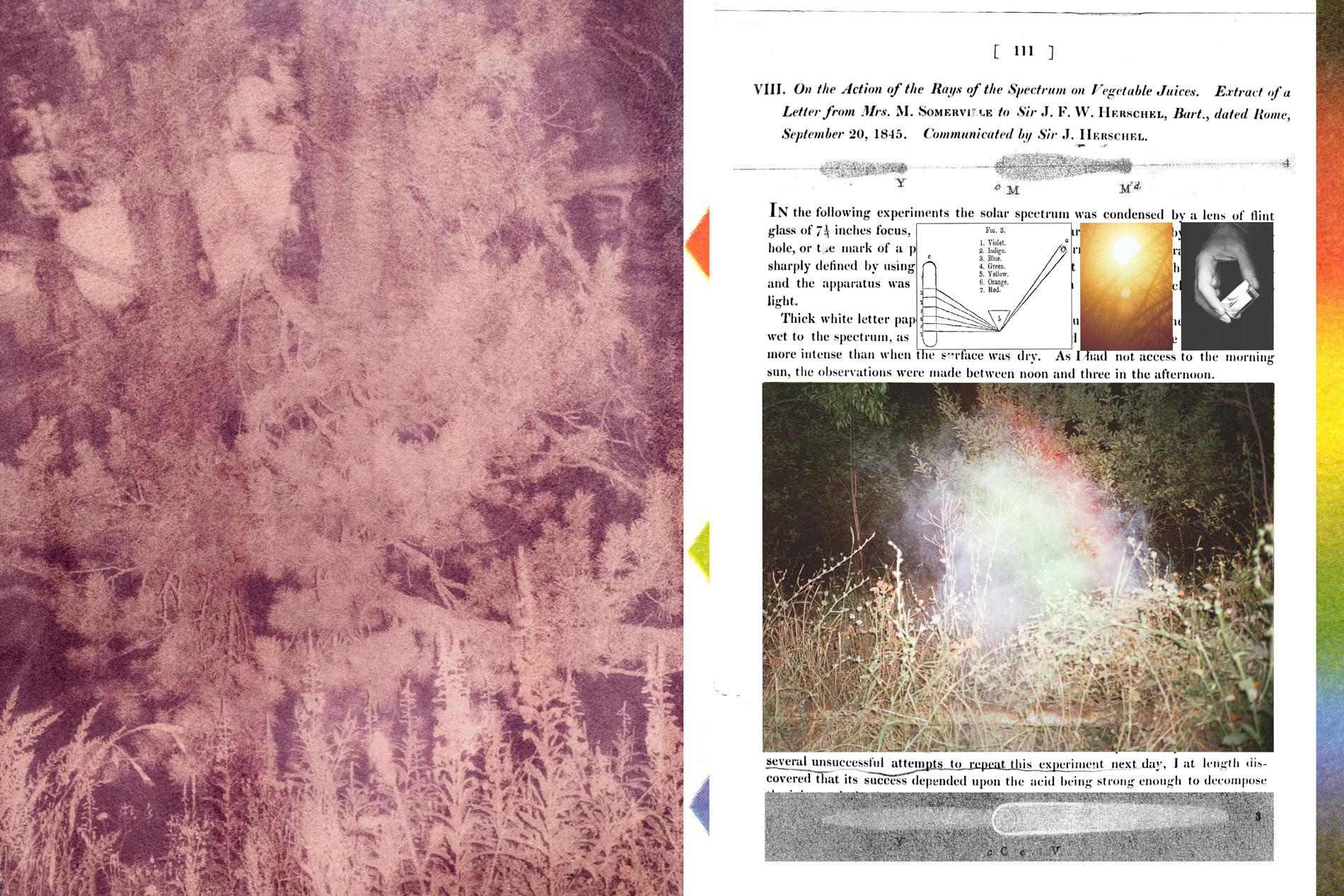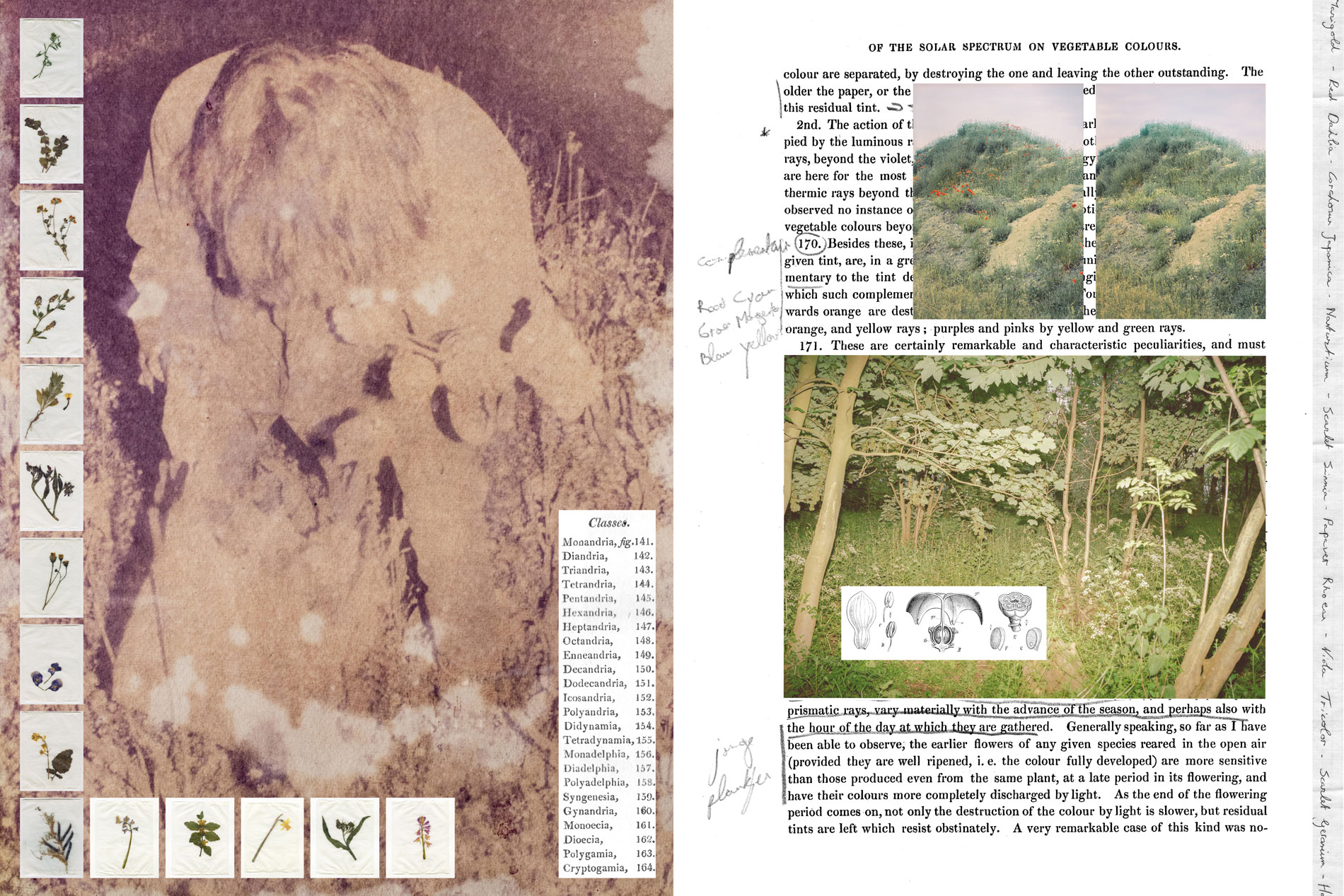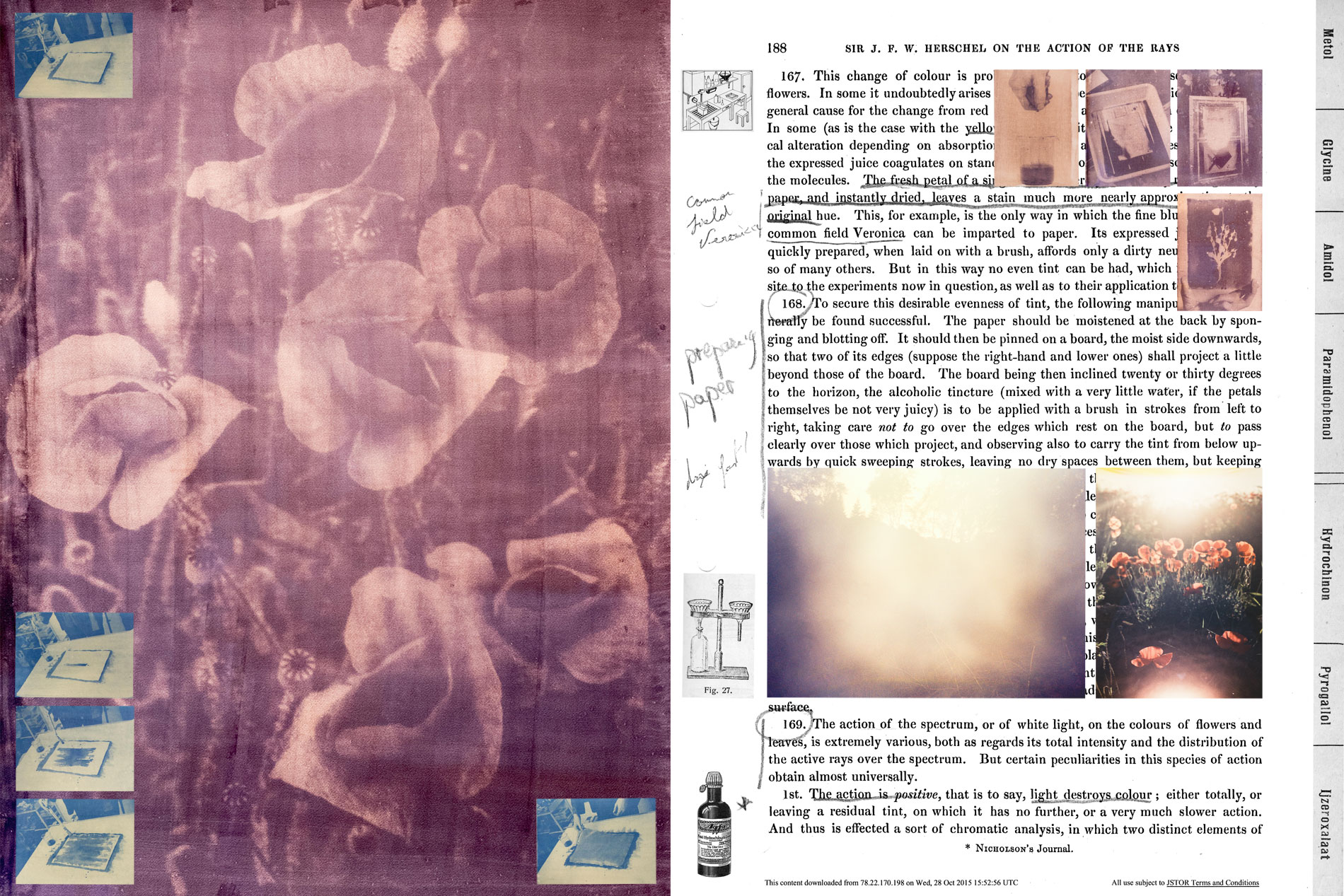“Cameras began duplicating the world at that moment when the human landscape started to undergo a vertiginous rate of change: while an untold number of forms of biological and social life are being destroyed in a brief span of time, a device is available to record what is disappearing.”
SONTAG, Susan (1977), On Photography
Since its invention in the 19th century, photography has walked step by step with industrial growth and pollution. Photography was born into a world of smoke and smog, predestined to become a symbol of a new world-order. The camera as a modern device prophesied the changing times that evoked its invention as it originates in an era marked by industrialization, mass production, automation, globalisation and capitalization. Not only does photography thrive on a cybernetic relation between an apparatus and an operator, it also engages in the relationship between the human and the non-human on a level where no other representation-based artform is capable of doing so. Photography is the medium par excellence to capture and imagine invisible and irreversible change.
Shortly after the invention of photography, Mary Somerville, a Scottish scientist and mathematician, started researching the light sensitive qualities of plants. By subtracting chlorophyll from weeds and flowers, she was able to produce organic light sensitive emulsions. French Marigold, Red Dahlia, Corchorus Japonica, Nasturtium, Globe Amaranth, Plumbago Auriculata, Viola Tricolour, Harlequin Flower, Scarlet Geranium, Black Hollyhock, Persian Speedwell, Purple Dahlia, etc. Almost any flower could be used, some only leaving a faded imprint, others leaving a clear and sharp image. The workspace was filled with colour and scent, a pure expression of nature itself.
Harvesting flowers for photographic impressions goes like this. Early season and morning flowers carry much more juice in their petals, resulting in a colour-richer extract. During the harvest, the flower may agree or disagree. There is always only one attempt in harvesting a petal, if a leaf does not allow itself to be picked from the first try, it is meant to stay. If you can’t reach it, leave it. If a bee is on the flower, the plant already serves a purpose. Leaving the seed pots or sowing them elsewhere ensures the life cycle for the coming years.
After harvesting, the petals are crushed and their colourful juice is squeezed out using a linen tea towel. The tincture is evenly applied on a piece of paper, which is then placed in a contact printing frame. In order to obtain optimal results, the process has to synchronise with the whims of nature. Only bright summer days will yield feasible results since the organic coating is most sensible in the UV-spectrum. The exposure time to establish an image impressed by nature’s hand varies from a couple of days to several weeks. When the paper is exposed outdoors, it is best to keep an eye on the changes in weather since the slightest drip of rain could render hours of previous work obsolete.
“The practice of doing real science brings the questioner into an unparalleled intimacy with nature fraught with wonder and creativity as we try to comprehend the mysteries of the more-then-human world. Trying to understand the life of another being or another system so unlike our own is often humbling and, for many scientists, is a deeply spiritual pursuit. Contrasting with this is the scientific worldview, in which a culture uses the process of interpreting science in a cultural context that uses science and technology to reinforce reductionist, materialist economic and political agendas.”
WALL KIMMERER, Robin (2013), Braiding Sweetgrass
With her humble scientific distinctness and strong artistic imagination, it is of no surprise Mary Sommervile wondered about the action of the rays of the solar spectrum on vegetable juices. Think, for example, of germinating seeds, raising their nearly translucent heads to see their first glimpse of sunlight. Or what about dandelions that are partly covered by a pile of soil, marking the unexposed leaves with a faded ghost green hue.
The research of Mary Sommerville opens up for a non-solely data-based scientific understanding and recognizes that nature is not only an index of fauna and flora, but describes a self-regulative system of survival. It invites for a scientific approach which not only regards the object of research as an isolated entity in a controlled environment, but researches it as it is, embedded in an ecosystem including both human and non-human entities.
Despite her seminal results, Somerville could not publish her research since the academic circles of the 19th century did not allow for female scientists. Determined to share her findings, she wrote a letter to Sir John Herschel, a male colleague and well respected pioneer in photography, who published an extract of Mary’s letter in the Philosophical Transactions of the Royal Society of London. Although the basic knowledge for producing photography expressed by Mary Somerville and John Herschel is straightforward and easily accessible, it ended up as a leftover within the history of photography. Producing images with vegetable juices demands extreme long exposure times and was therefore outshined by toxic chemical processes. No commercial application was feasible since the process is slow, labour intensive and subject to hardly controllable parameters.
“The traditional photographic image might be chemically made, but it is culturally shaped. A real paradox exists between physics and point of view. By its operation, its mechanics, the camera carries out not the commands of the photographer who wields it with apparent freedom but rather the encoded program of its makers.”
SUTTON, Damien. (2009) Photography, Cinema, Memory: The Crystal Image of Time
As photography became part of the global culture, it found its way to the common household and marked an era that democratised the image maybe for the first time. Today an estimated 2.4 billion photographs are created each day. The democratisation of photography, however, did not result in a democratisation of its tools. The raw materials for the photographic process are now produced in factories, chemically developed, non-durable and often mined in hard labour conditions. The techno-industrial complex and its mechanical reproduction systems are not only based on finite resources but also threaten the heritage of a body of immaterial knowledge and craftsmanship. Technological progress itself seems to have become the goal to pursue. Tools have become machines, instructed by a black box mystery, destabilising the relation between production and product.
With technology replacing photographic craftsmanship, an alienation from the resources that underlie the medium took place. Henceforth, no technological product is free from ideology, not only in the way the products are produced, but also in the way the product is programmed, used and advertised. The earliest prototypes of digital cameras, for example, were developed by the American Military for spying satellites. Photographic companies such as FujiColor, Agfa Gevaert and Kodak Eastman started producing raw material for the pharmaceutical industries as they tried to deal with the decreasing demand for photographic film. All these different interest groups are represented in the board of directors and determine the ideology of the compagnies in which they are embedded. These examples demonstrate that there are always other programs behind the photographic program: the photographic apparatus works for the photographic industry, which works for the industrial complex, which works for the socio-economical system and so on. Images produced within the logic of the photographic program therefore often exist outside our consciousness.
Revaluing the oppressed research of Mary Somerville from a contemporary point of view, stresses the relation with nature in such a way that it almost becomes an act of nature performing. It questions the production standards of mining, supply chains and machinery in a post-industrial age where new ecological realities emerge. The historical use of organic dyes and colouring agents dates as far back as human kind and was rigorously used in ancient Persia, early Chinese Dynasties, Mesopotamia, the Ottoman Empire, etc. Creating images impressed only by nature’s hand constitutes a fragile relationship between appearing and disappearing. The image created upon the actions of the rays of the solar spectrum is also easily destroyed by the sun’s agency. Henceforth the process becomes an act of care, protecting the fugitive images or colours against their changing over time by applying a coating of lavender-varnish or reducing the exposure to light.
The restoration of ancestral botanical knowledge results in a reestablishment of our relation with nature and offers perspectives for critical stories. After reaching the point of no return, speculative histories turn into imaginable futures. Using the landscape and what originates in it as the basic material for image production turns the non-human into an active agent, giving it a voice in which it can communicate. Slowly detoxifying practices, learning from our ancestors and revisiting histories might help to restore our ties with nature towards a non-anthropocentric reciprocal kinship.
AUTHORS BIOGRAPHY
Tim Theo Deceuninck (*1992, Aartrijke) is a photographer, city-farmer and time traveller. With his hands touching the ground, his work is in direct relation with nature, working in the field of regenerative ecologies / restorative histories / anachronistic aesthetics / rituals of growth and loss / social botany. Through historical processes and narratives, the artist tries to gain a deeper insight in the historical use and memory of the landscape. As part of his process he elaborates lens elements, focal points, early measuring instruments and camera mechanics to fully understand the photographic medium. Since the analogue photographic process is based on the use of silver nitrate, which needs toxic chemical development to make a latent image visible, Tim Theo Deceuninck got interested in non-toxic and non-iron based exposure and printing techniques. He started experimenting with different organic materials and methods of extracting light sensitive material from natural resources.
The article “Silver nor Gold” is based on the book “Letter to Mary S.“, available on: timtheodeceuninck.com/book-letter-to-mary-s/
READING LIST
- AZOULAY, Ariella. (2014) “The Civil Contract of Photography”, Zone Books
- AZOULAY, Ariella. (2018) “Unlearning the Origins of Photography” in Unlearning Decisive Moments of Photography
- BARTHES, Roland. (1980) “Camera Lucida”, Vintage
- BENJAMIN, Walter. (1931) “A Short History of Photography” in Screen, Volume 13, Issue 1, Spring 1972
- BENJAMIN, Walter. (1931) “The Work of Art in the Age of Mechanical Reproduction”
- DEMOS, T.J. (2016) “Decolonizing Nature: Contemporary Art and the Politics of Ecology”, Sternberg Press
- DEMOS, T.J. (2017) “Against the Anthropocene: Visual Culture and Environment Today”, Sternberg Press
- BERRY, Wendell. (2021) “What I stand for is What I Stand On“, Penguin Books Ltd
- GOULSON, Dave. (2020) “The Garden Jungle; or gardening to save the planet“, Vintage
- HARAWAY, Donna J. (2016) “Staying Within the Trouble“, Duke University Press
- FLUSSER, Vilém. (1983) “Towards a Philosophy of Photography”, Reaction Books
- WALL KIMMERER, Robin (2013) “Braiding Sweetgrass“, Penguin Books Ltd
- LATOUR, Bruno. (2018) “Down to earth: politics in the new climatic regime“, Polity Press
- MABEY, Richard. (2012) “Weeds: In Defense of Nature’s Most Unloved Plants”, Harper Collins Publishers
- MORTON, Timothy. (2021) “All Art is Ecological“, Penguin Books Ltd
- SOLNIT, Rebecca. (2001) “Wanderlust: A History of Walking”, Granta Publications
- SONTAG, Susan. (1977), “On Photography“, Penguin Books Ltd
- SUTTON, Damien. (2009) “Photography, Cinema, Memory: The Crystal Image of Time”, University of Minnesota Press.
- TALBOT, William Henri Fox. (1844) “The pencil of nature” , London: Longman, Brown, Green, & Longmans.
- VAN LIER, Henri. (1983) “A Philosophy of Photography” , Leuven University Press
- WOHLLEBEN, Peter. (2017) “The Hidden Life of Trees“, Vintage
- WOHLLEBEN, Peter. (2019) “The Secret Network of Nature“, Vintage



